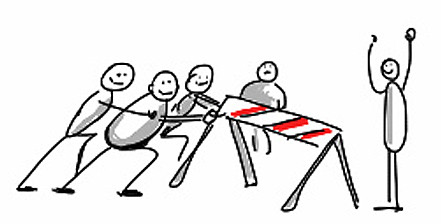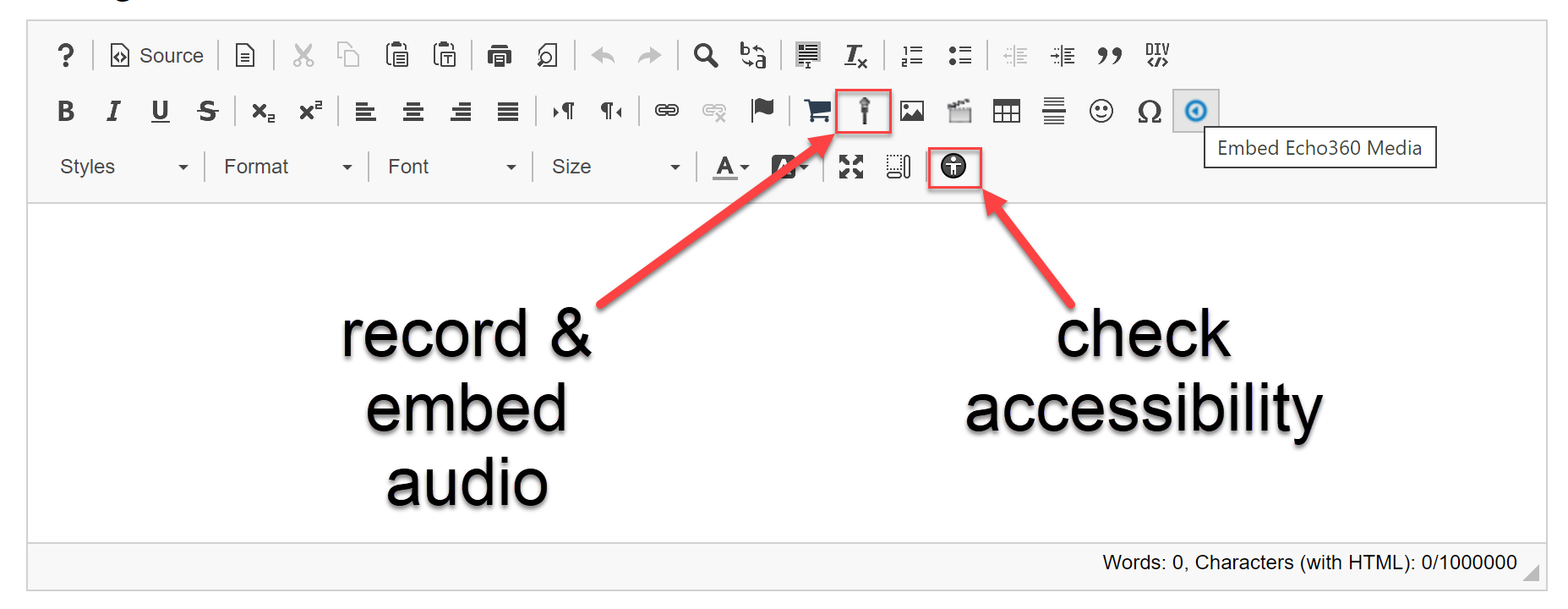Session 6: Web Accessibility

To do this session
✓ Read and Review all Resources
✓ Check your written content for web accessibility
✓ Create a recording of your written component
✓ Complete the quiz
Session Introduction
Ensuring accessibility for our resources is not only good practice, it’s the law.
From the Brock University Accessibility Office:
The Accessibility for Ontarians with Disabilities Act, 2005 (AODA) is law in Ontario, and establish specific requirements for all Ontario organizations, including universities. As an inclusive university, we want to do what’s right, not just because we have to comply with legislation. Just as we are removing barriers to our facilities and infrastructure on campus, we are moving toward making teaching and learning more accessible. Beginning Jan. 1, 2013, Section 16 of the Integrated Accessibility Standards Regulation of the AODA requires that educational institutions provide educators with accessibility awareness training related to accessible program or course delivery and instruction. As a society and within our organizations, we are shifting paradigms – moving away from focusing on an individual’s limitations or deficits (“the medical model” of disability) We are moving towards recognizing disability as a social construct, with the focus on proactively removing barriers to groups of people created by inaccessible design of our goods, services or facilities. Accessibility means giving people of all abilities the opportunity to participate fully in daily life. Accessibility means that we take reasonable efforts to provide our teaching and learning in a way that respects the dignity, independence, integration and equality of opportunity of all students, including students with disabilities. At Brock our institutional commitment to accessibility is outlined in our University policy – Provision of University Goods and Services to Persons with Disabilities.
From the Ontario Human Rights Commission (2018):
Ensuring integration and full participation means designing society and structures for inclusiveness. Inclusive or “universal” design emphasizes barrier-free environments and equal participation of persons with psychosocial disabilities with varying levels of ability. It is a preferred approach to removing barriers or making “one-off” accommodations, which assume that existing structures may only need slight modifications to make them acceptable.
Universal Design for Learning ensures a lot of accessibility from the outset, however, there are very specific things you need to do to ensure your material is accessible for all learners. Review Brock University’s Centre for Pedagogical Innovation Guide to Creating Acessible Classroom Resources.
As you prepare your written component this week, ensure you are using accessible practices, paying attention to font size, colour, and use of styles for headings. Be sure your formatting does not make use of tables to structure content, unless it is specifically for data. Create an audio recording of your written text by using the audio embed button.
Consider the use of alternative descriptions for images and transcripts/captioning for videos.

Learning Outcomes
By the end of this session you should be able to:
- identify, create and select accessible content using image alt tags, captions, transcripts;
- design using multiple means of expression, multiple modes of representation, and multiple modes of engagement; and
- identify barriers to accessibility in the online environment and how to design from the outset to remove them.
Session Resources
- Centre for Pedagogical Innovation (2020) Guide to Creating Accessible Resources. Brock University
- Ontario Human Rights Code. (2018). Section 8: Duty to Accommodate. In OHRC Policy on Accessible Education for Students with Disabilities.
Learning Activities
Quiz
Reflection
- Did you discover anything new when you considered accessibility of your content? Will your practice change?
- What was your most significant learning this session? What was your muddiest moment?
Bridge to Next Session
Next, we will discuss the importance of effective feedback.

